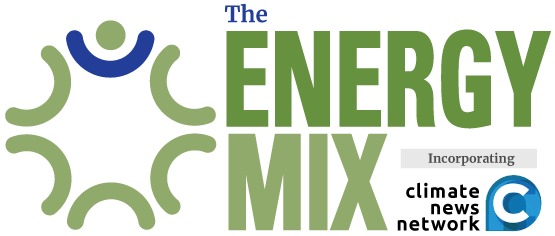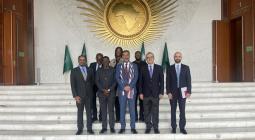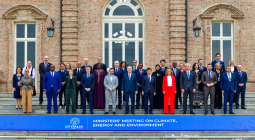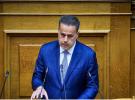Wildfires Pull Climate Onto the Agenda as G7 Leaders Meet in Alberta
With the G7 leaders’ summit due to descend on Kananaskis, Alberta June 15-17, questions are swirling about what Canada can accomplish with this year’s G7 presidency and how agreement is possible with Donald Trump in the room—while swirling smoke from a devastating Prairie wildfire season helps bring climate change back onto the leaders’ agenda.
Now in its 50th year, the G7 brings together the leaders of seven of the world’s biggest economies plus the European Union in what is described as a “forum for co-operation, stability, and shared prosperity.” The leaders’ summit each year is meant to end with a consensus statement of all the countries. But community voices on everything from climate change to international finance and justice have rarely been satisfied with the outcome. Much of the news analysis leading up to this year’s event has cast the G7 as a diminished institution, reduced to handshakes, photo ops, and carefully-worded generalities that are the most the countries can agree to.
Coming into this year’s summit, the G7’s “legitimacy is hanging by a thread. Its promises have fallen flat, its unity is strained, and its moral voice is fading fast,” retired civil servant Bhagwant Sandhu writes for The Hill Times.
“Originally conceived as a multilateral pact among Western democracies to steward global economic control, the G7 was never intended to serve the desires of its most powerful—and now unpredictable and illiberal—member: the United States,” he adds. “The group’s initial goals have been obscured by authoritarianism, unilateral action, and creeping militarization.”
That leaves Prime Minister Mark Carney with a choice, Sandhu says. “Canada can, of course, preside over the usual choreography of communiqués and handshakes—or try something more ambitious: restore the G7 to its founding mission.”
Three ‘Core Missions’, One Landmine
Carney’s office kicked off that discussion June 7 with a list of the three “core missions” the PM will pursue in his role as G7 president, all “anchored in building stronger economies”—the same priority, CBC points out, that he has brought to the domestic scene in Canada. The list includes:
• “Protecting our communities and the world” by “strengthening peace and security, countering foreign interference and transnational crime, and improving joint responses to wildfires”;
Building energy security and speeding up the “digital transition” by fortifying critical mineral supply chains and using technologies like artificial intelligence to spur economic growth;
• Investing in stronger infrastructure, creating higher-paying jobs, and fostering “dynamic”, competitive markets for business.
But much of the attention so far has been on the chaos Trump will bring to the table, just as he did in 2018 when Canada last hosted the G7 in Charlevoix, Quebec. Then, as now, U.S. tariffs were at the centre of the discussion, and Trump issued two angry tweets pulling the U.S. out of the leaders’ final communiqué, just hours after countries had signed off on the text.
“A show of unity on big geopolitical problems that holds longer than a few hours after President Donald Trump’s participation will be seen as success after the American president in 2018 blew up a fragile consensus even before he left the last Canada-hosted G7 in Charlevoix, Que., later angrily insulting then-prime minister and G7 host Justin Trudeau,” writes Toronto Star Ottawa bureau chief Tonda McCharles.
This time around, “a key performance indicator for the summit will [be] getting something down that all leaders can agree upon that will also include the U.S.—and that will be a challenge,” Deanna Horton, a diplomat who served twice in the Canadian embassy in Washington, told The Hill Times.
On June 11, McCharles reported that organizers of this year’s summit are not looking for a final communiqué that represents a consensus of all G7 members. “Instead, G7 host Carney is expected to issue a G7 chair’s statement and the closed-door high-stakes sessions that could nevertheless produce some heated discussions will be summarized in documents likely to be so whitewashed of the juicy bits, that they could almost be written in advance.”
The Star has details on how the Summit agenda is likely to play out.
Carney has also stirred controversy with the list of “middle power” countries he’s invited to the summit. In addition to the leaders of Ukraine, Mexico, Brazil, South Africa, Australia, and South Korea, the list includes Indian Prime Minister Narendra Modi, whose government has been linked to acts of murder and extortion on Canadian soil, and Saudi Crown Prince Mohammed bin Salman, who has been connected to human rights crackdowns, mistreatment of migrants, and the 2018 murder and dismemberment of journalist Jamal Khashoggi.
Promises Made and Broken
Meanwhile, Carney’s plan for the summit makes scant direct reference to past G7 commitments in areas like power sector decarbonization, methane controls, forest and land degradation, and elimination of fossil fuel subsidies—a promise the countries made in 2016 and were supposed to deliver on by this year.
“Its climate commitments remain stalled, and the vaunted $600-billion infrastructure pledge to the Global South—first announced in 2021 as the ‘Build Back Better World’ initiative—has been more frequently rebranded and re-announced than realized,” Sandhu writes for The Hill Times. Moreover, “the G7 has yet to fulfill its decades-old promise to allocate 0.7% of each member’s gross national income to humanitarian aid. At the start of the 2023 Hiroshima summit, it was still short by a staggering US$4.49-trillion. More troubling still, members like the United Kingdom have diverted aid funds from humanitarian crises to finance NATO expansions, raising serious questions about the group’s priorities.”
In a release this week, Oxfam warned the G7 is in the midst of its biggest-ever foreign aid cut. The member countries, which account for three-quarters of the world’s official development assistance, are on track to cut their aid budgets 28% in 2026 compared to 2024 levels, the organization said.
“Rather than breaking from the Trump administration’s cruel dismantling of USAID and other U.S. foreign assistance, G7 countries like the UK, Germany, and France are instead following the same path, slashing aid with brutal measures that will cost millions of lives,” said Oxfam International Executive Director Amitabh Behar. “The G7’s retreat from the world is unprecedented and couldn’t come at a worse time, with hunger, poverty, and climate harm intensifying. The G7 cannot claim to build bridges on one hand while tearing them down with the other.”
Meanwhile, in a G7 agenda stripped bare of any language that could rile up a volatile U.S. president, author Arno Kopecky says the massive wildfires covering swaths of Manitoba, Saskatchewan, Alberta, and British Columbia are playing into Canadian officials’ plan for keeping climate change in the conversation.
When officials first began planning the meeting last year, “Canada’s Liberal government wanted the G7 to discuss climate change (the host nation sets the summit agenda), but what if Donald Trump was there as President?” Kopecky writes for the Globe and Mail. “This was no abstract worry either: the day before Jasper caught fire, Joe Biden had dropped out of the presidential race, and the Democrats’ prospects looked dismal.”
Officials “knew that if they start with the standard stuff on climate change, Donald Trump and his people would get out their red pens and just say ‘no way,’” John Kirton, founding director of the G7 Research Group, told Kopecky. “So then, what is your strategy? And wildfires was the answer.”
The difference, Kopecky writes, is that while Trump refuses to listen to climate science, he’s seen a rash of wildfires since he returned to the White House in January, and his country is now receiving smoke from the blazes in Canada. “So Donald Trump’s got a reason to be seen to be doing something about it,” Kirton said.
It also “speaks volumes” that the energy security section of the G7 agenda talks about artificial intelligence, but makes no reference to oil and gas, Kopecky writes.
Cover photo: G7 leaders confront Donald Trump at 2018 summit, photo by Angela Merkel/Instagram






